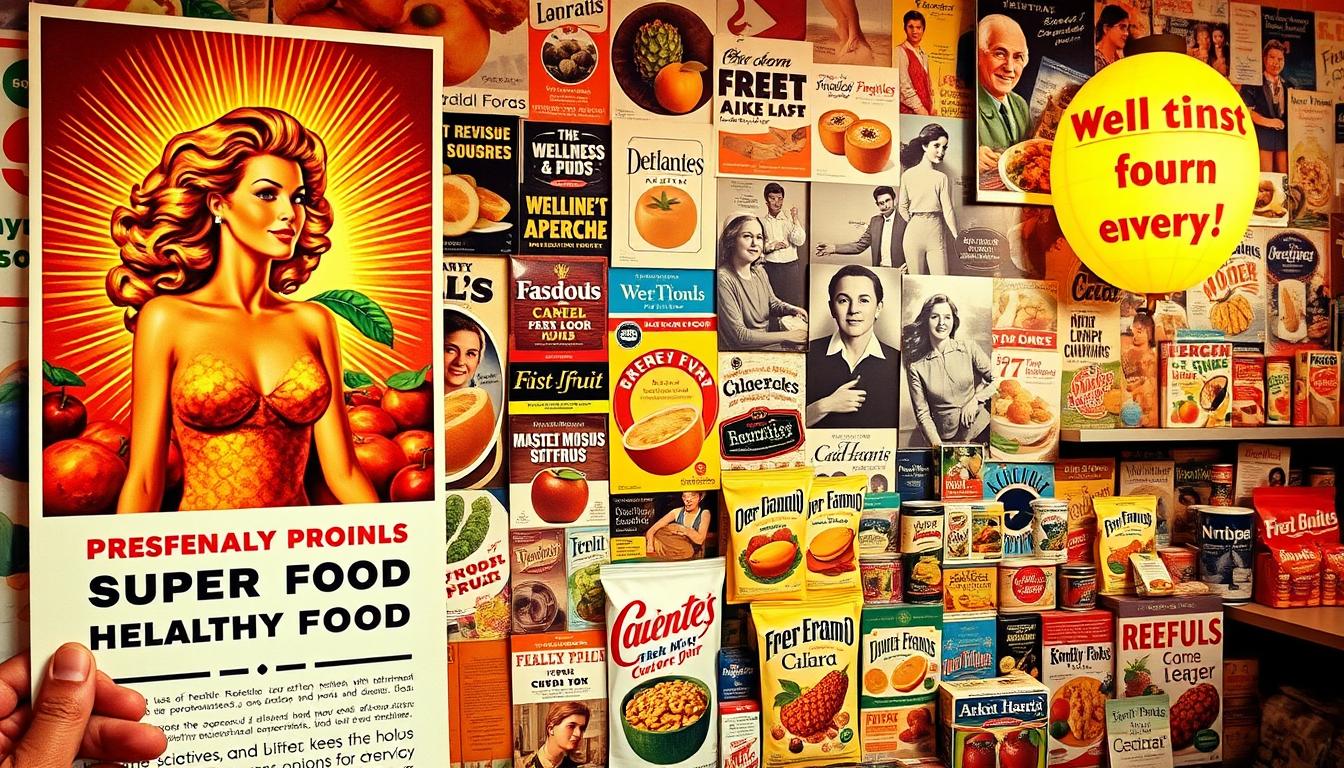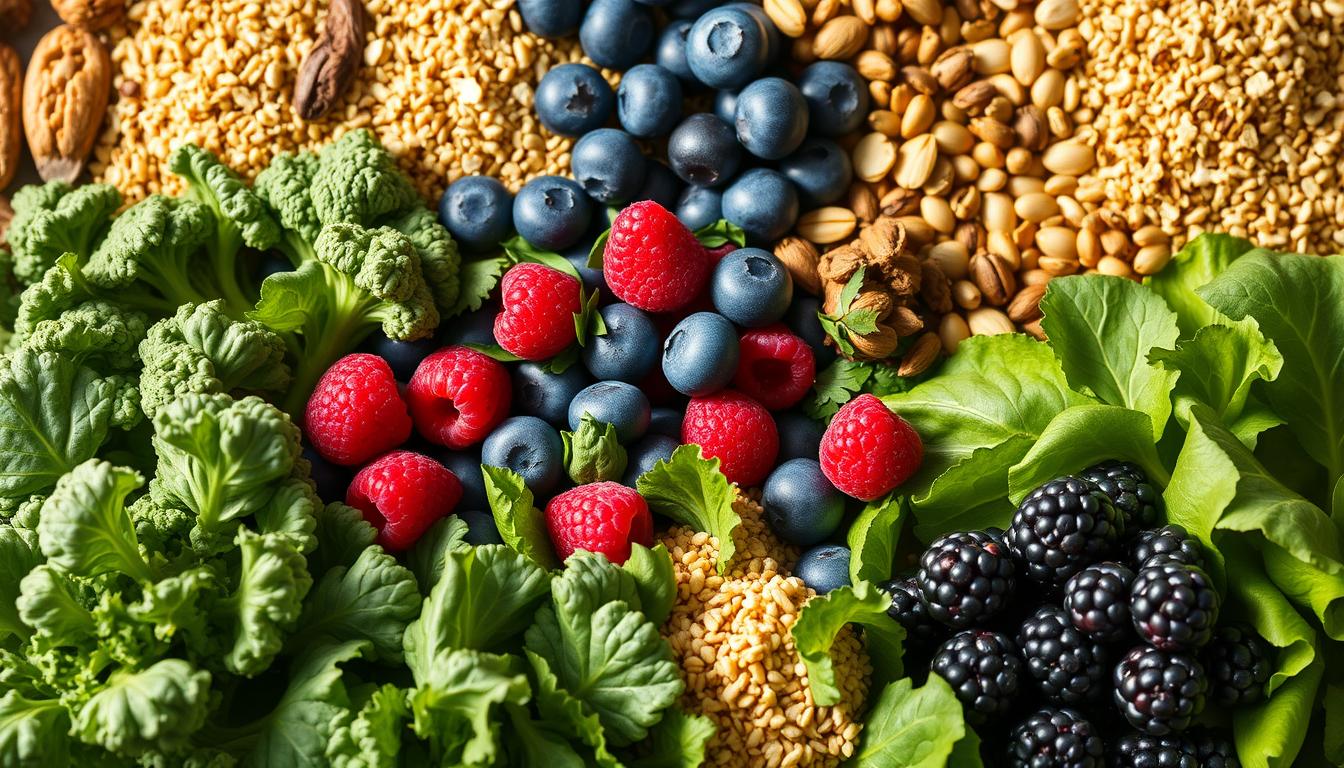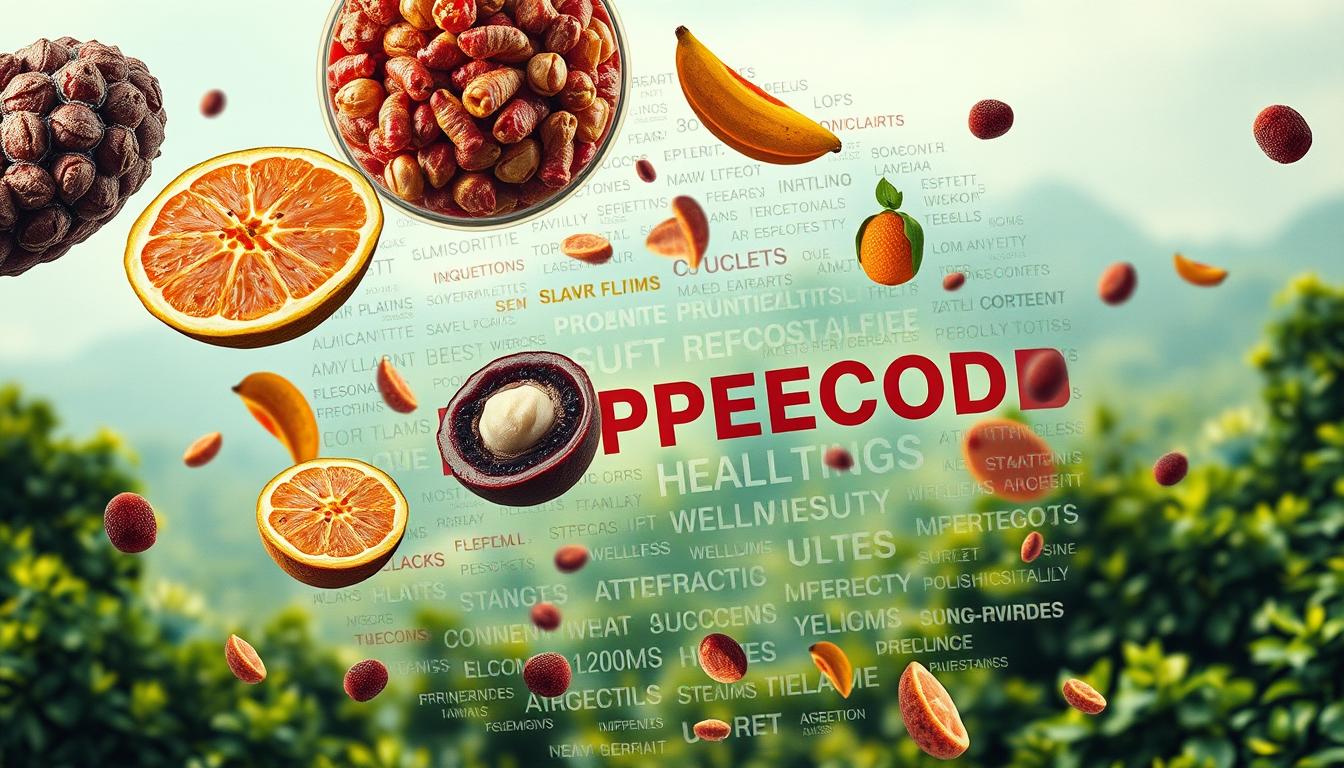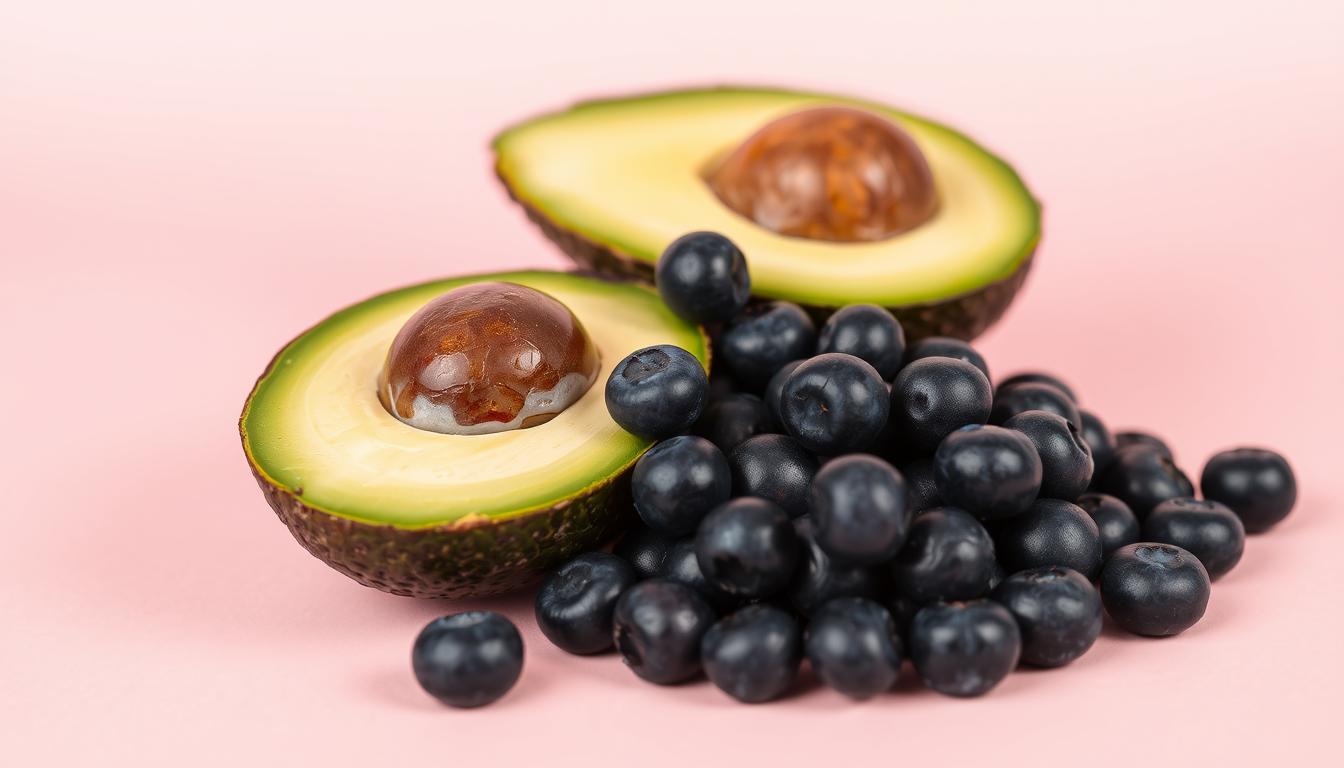Did you know 80% of consumers now view food as medicine? This mindset fuels the booming superfood industry, with product launches surging 36% in just one year. Yet no scientific definition exists for these nutrient-packed foods.
Merriam-Webster defines them simply as foods rich in beneficial compounds. Marketing teams love the term, but nutritionists debate its validity. You’ll find everything from ancient grains to exotic berries wearing this label.
Global sales keep climbing as people pay premium prices for promised health benefits. But do these foods deliver better results than common alternatives? Let’s examine both the hype and the science behind this diet trend.
Key Takeaways
- Superfoods lack an official scientific definition despite popularity
- Consumer demand drives 36% annual growth in product launches
- 80% of Americans now believe in food’s medicinal properties
- Marketing claims often exceed proven nutritional value
- Common foods may offer similar benefits at lower costs
The Truth About Superfoods: What Are They?
Bananas were the original superfood, thanks to clever marketing in 1917. The United Fruit Company pushed them as a miracle food during WWI, even publishing medical journal ads. This birthed the term we know today—though no formal definition exists.

From Bananas to Blueberries: A Century of Hype
Early campaigns relied on medical endorsements. Fast-forward to 1991, the USDA’s ORAC scale gave antioxidant claims legitimacy. But in 2012, they retracted it, calling measurements “flawed.” By then, the food industry had a new tool: corporate-funded research.
Example: Açaí berry studies often trace back to growers or supplement brands. Price premiums follow—45% of U.S. product launches now use “superfood” labels.
The Engine Behind Trendy Ingredients
Modern marketing ties exotic foods to health buzzwords. Goji berries became “anti-aging,” quinoa a “complete protein.” Yet common foods like spinach offer similar benefits for less.
| Era | Tactic | Example |
|---|---|---|
| 1910s–1950s | Medical journal ads | Bananas for digestion |
| 1990s–2010s | Antioxidant scales | Blueberries on ORAC lists |
| Present | Influencer campaigns | Turmeric lattes on Instagram |
Behind every trend, you’ll find food industry giants funding studies. The lesson? Scrutinize flashy claims—especially when prices spike.
The Pros of Superfoods: Do They Deliver on Their Promises?
Research confirms some foods deliver more nutrients per bite than others. While marketing often exaggerates, certain choices genuinely pack a nutritional punch. Let’s explore the science behind their potential.

Nutrient Density and Health Benefits
Dark leafy greens like kale and spinach top nutrient charts. One cup of kale provides 684% of your daily vitamin K needs, while spinach offers 56% of vitamin A. Both are rich in minerals like iron and calcium.
Berries shine for their antioxidant content. Blueberries contain anthocyanins, compounds linked to brain health. A 2019 NIH study found these pigments may reduce oxidative stress by up to 20%.
| Food | Key Nutrient | % Daily Value (per cup) |
|---|---|---|
| Kale | Vitamin K | 684% |
| Spinach | Vitamin A | 56% |
| Blueberries | Antioxidants | ORAC score 9,621 |
Disease Prevention and Long-Term Health
Cruciferous vegetables like broccoli contain glucosinolates. These sulfur compounds may lower cancer risk by detoxifying harmful cells. The Mayo Clinic recommends them for immune support.
Purple foods—think beets and blackberries—get their hue from anthocyanins. Research suggests these antioxidants combat inflammation, a root cause of chronic disease.
“Eating a rainbow of whole foods ensures diverse phytochemical intake.”
Omega-3s in chia seeds and walnuts show promise too. Studies indicate they support heart health better than some supplements, with 30% higher absorption rates.
The Cons of Superfoods: The Hype vs. Reality
Regulators have repeatedly flagged exaggerated health claims in the superfood industry. The FDA fined POM Wonderful $34 million in 2012 for unsupported disease prevention claims. Similarly, Europe’s EFSA rejected 90% of antioxidant benefit assertions in 2011.

When Labels Lie: Decoding Marketing Myths
“Whole grain” labels can appear on products containing just 51% whole grains. The ORAC scale, retracted in 2012, still fuels antioxidant misinformation today. Goji berry sellers continue citing debunked cancer research from 1994.
Common loopholes include:
- Vague terms like “supports immunity” without dosage specifics
- Cherry-picked studies ignoring contradictory evidence
- Celebrity endorsements masquerading as science
The Hidden Costs of Superfood Obsession
Focusing solely on trendy ingredients creates nutritional blind spots. Kale’s oxalates can block calcium absorption when eaten with dairy. Quinoa’s popularity led to price surges making it unaffordable for Andean communities.
| Superfood | Claimed Benefit | Reality Check |
|---|---|---|
| Açaí berries | Neutralizes free radicals | No better than strawberries |
| Chia seeds | Complete protein source | Requires pairing with grains |
| Maca root | Hormone balancing | Limited human trials |
Monocrop farming for trendy foods damages ecosystems. Avocado orchards consume 72% more water than traditional crops. Meanwhile, common beans offer similar protein at lower environmental cost.
“Single-food fixation contradicts decades of nutrition science showing variety matters most.”
Your body absorbs nutrients best from diverse sources. Spinach’s iron needs vitamin C to activate, while turmeric requires black pepper. This synergy gets lost in superfood isolation.
Superfoods Under the Microscope: Case Studies
Blueberries and avocados dominate health discussions—but do they deserve the hype? Let’s dissect two iconic examples where marketing meets science.

Blueberries: The Antioxidant Powerhouse?
After the USDA’s ORAC scale launch in the 1990s, blueberry production doubled. These berries contain anthocyanins, linked to reduced oxidative stress. But studies show their impact is comparable to strawberries—at half the cost.
Reality check: While beneficial, blueberries aren’t unique. Black rice and red cabbage offer similar antioxidants. The “superfood” label often ignores affordable alternatives.
Avocado: Healthy Fat or Calorie Bomb?
Avocados provide monounsaturated fats, great for heart health. Yet one whole fruit packs 240 calories—more than a Mars Bar. Their environmental cost is steep too: 272 liters of water per 0.5kg.
Hidden factors: Mexican cartels control avocado trade, inflating prices. For similar fats, try walnuts or olive oil—lower in calories and conflict.
“No single food guarantees health. Balance matters more than any ‘super’ label.”
Salmon outperforms chia seeds in omega-3 bioavailability, while seaweed’s heavy metal risks go unmentioned in ads. The takeaway? Look beyond trends.
How to Incorporate Superfoods Wisely Into Your Diet
Smart nutrition isn’t about chasing exotic ingredients—it’s about balance. By focusing on a super plate approach, you can maximize benefits without overspending or falling for hype.
Building a Nutrient-Powered Plate
The Mayo Clinic Diet recommends dividing meals into simple ratios: 50% fruits vegetables, 25% whole grains, and 25% lean proteins. White potatoes, often dismissed, actually offer more potassium than bananas—a great budget-friendly swap.
Try these easy adjustments:
- Replace açaí bowls with mixed berries and spinach smoothies
- Swap expensive quinoa with brown rice or barley
- Use canned sardines instead of pricey salmon for omega-3s
Eating the Rainbow Made Simple
Color variety ensures diverse phytochemical intake. Beetroot’s nitrates convert efficiently to nitric oxide, boosting circulation. Meanwhile, white mushrooms provide surprising vitamin D when exposed to sunlight.
Follow this weekly rotation strategy:
- Red: Tomatoes or bell peppers (lycopene)
- Orange: Carrots or sweet potatoes (beta-carotene)
- Green: Kale or broccoli (chlorophyll)
- Purple: Eggplant or red cabbage (anthocyanins)
“Local seasonal produce often matches imported superfoods in nutrient density at half the cost.”
Farmers’ markets offer fresh options that support your community. In winter, opt for squash and citrus instead of shipped tropical fruits. This approach keeps your diet sustainable and packed with variety.
Conclusion
Good health comes from consistent habits, not miracle foods. For decades, nutrition science has shown balanced diet patterns outperform any single ingredient. USDA guidelines remain unchanged for 40 years—focus on whole grains, lean proteins, and colorful vegetables.
Beware “magic bullet” claims. Lasting benefits emerge from variety, not trends. Enjoy meals that fuel your body without breaking the bank. Local produce often matches exotic options in nutrient value.
Use this quick checklist when evaluating foods:
- Compare costs to common alternatives
- Check for peer-reviewed studies, not just ads
- Prioritize enjoyment—you’ll stick with what tastes good
For reliable guidance, consult Harvard’s Healthy Eating Plate. It cuts through hype with science-backed proportions. Remember, the best diet is one you’ll maintain long-term.